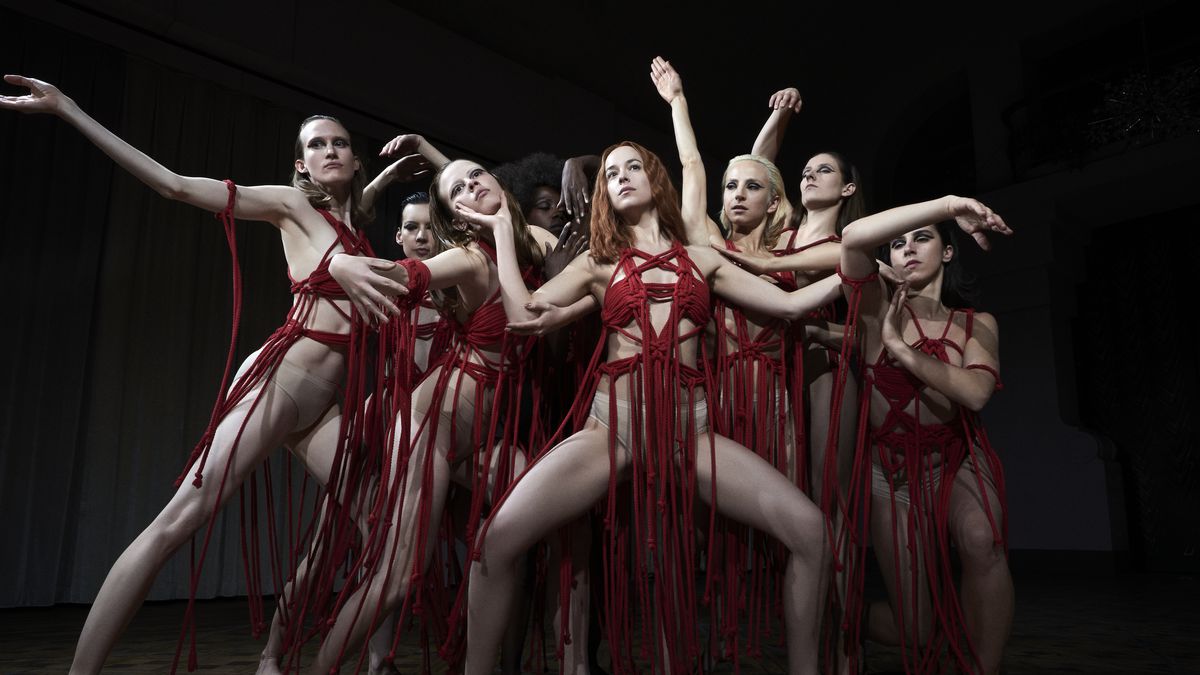
Whenever a remake of a classic film is announced, fans have reason to be skeptical. Though there’s been great remakes in the past, it’s hard to trust a film one loves in the hands of someone new. Having previously reviewed Dario Argento’s Suspiria (1977), I can say that though Luca Guadagnino’s Suspiria (2018) literally drains the color that made Argento’s original film iconic, this remake provides an interesting and different experience from its source material which is produced well enough to warrant intrigue.
In an attempt to further her art, American ballerina Susie Bannion (Dakota Johnson) moves to West Berlin to join the lauded Helena Markos Dance Company. Unbeknownst to her, a dark secret dwells in the hidden chambers beneath the dance studio, and as Susie climbs to the top of her class, she may come face to face with the evils influencing those who roam the halls of the Markos Dance Academy.
The performances throughout this film are great. Though Dakota Johnson’s acting career has a well-known stain called Fifty Shades of Grey, she more than proves herself as a capable actor through Suspiria. Additionally, Tilda Swinton takes on the challenge of playing three roles throughout the movie, and though the makeup she wears when playing Dr. Josef Klemperer can be distracting, she still plays her characters well.
Unlike in Argento’s Suspiria, the settings in Guadagnino’s Suspiria are integral to the story and themes, and is the source of the film’s greatest horrors. The dancing performed by the students at Markos Dance Academy acts as both the fuel of the forces behind the school and the source of the student’s pain, perverting dedication to art into a dark, bone-warping tool of evil. Furthermore, being set in Germany during the days of the Berlin Wall, the scars of a post-war generation make their appearance throughout the film, influencing the story in interesting ways that Argento’s story might not have considered.
While this movie is undoubtedly a slow-burn, there’s times where the story does drag on to the film’s detriment. Most prominently, though the sub-plot with Dr. Klemperer does bring up interesting discussion on the scars of World War II, it can feel repetitive, and at times it distracts from the main plot a little too much.
It’s best to describe Guadagnino’s remake of Suspiria as an inversion of Argento’s original classic. Where Argento’s Suspiria is a moody and colorful film preferring memorable atmosphere over story, Guadagnino’s Suspiria focuses on the narrative of the film at the cost of the visual design that gave Argento’s movie its following. Where Argento’s original film has a serviceable, campy story which doesn’t take itself too seriously, Guadagnino’s movie takes its story with utmost seriousness in an attempt to instill the audience with anxiety and fear.
This film is sure to divide audiences, and I myself am still processing my personal enjoyment of the film, but at the very least, Guadagnino’s Suspiria is an interesting spin on the original cult film, far preferable to the beat-for-beat nostalgia reels produced too often by Hollywood.
 George Ibarra is a Senior at Florida International University, pursuing a Bachelor’s Degree in English with a minor in Sociology, along with Certificates in Exile Studies and Film Studies.
George Ibarra is a Senior at Florida International University, pursuing a Bachelor’s Degree in English with a minor in Sociology, along with Certificates in Exile Studies and Film Studies.
